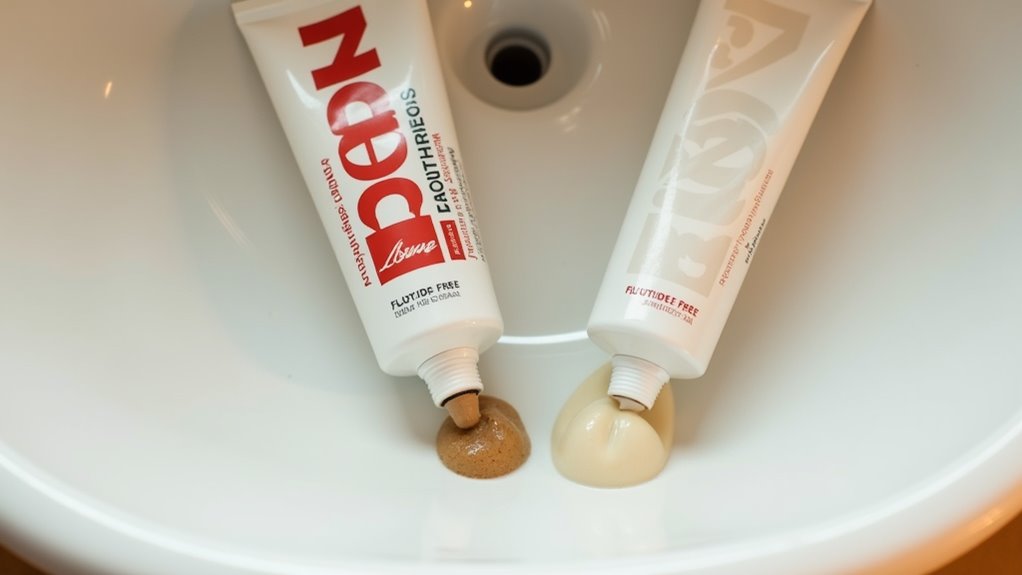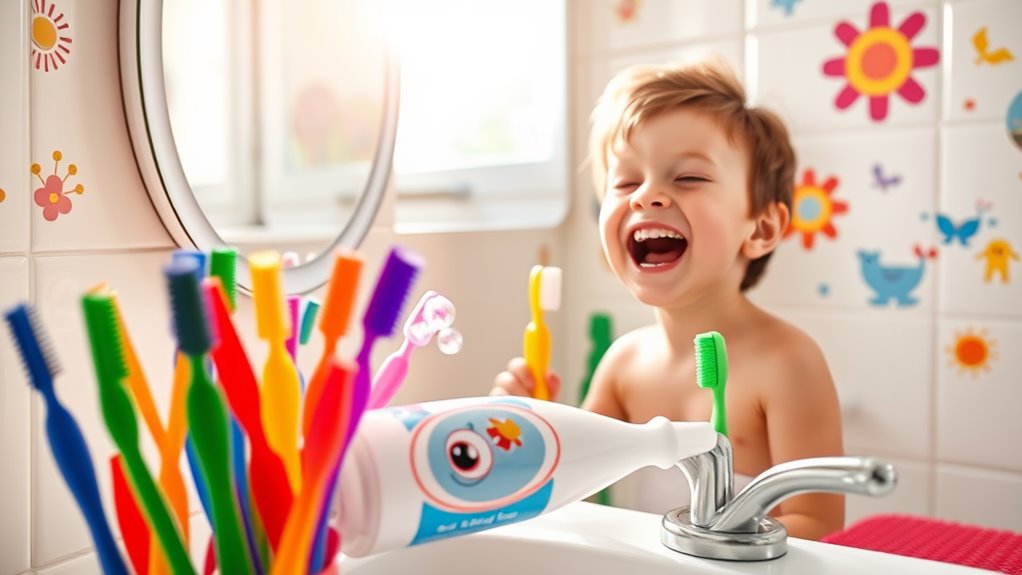Fluoride-Free Toothpaste- Genius or a Huge Mistake.
When you’re standing in the dental care aisle, you’ll notice a growing number of fluoride-free toothpaste options competing for your attention. You’ve probably heard conflicting claims about fluoride’s safety and effectiveness, leaving you uncertain about which choice will best protect your teeth. While natural alternatives sound appealing, the decision to go fluoride-free isn’t as straightforward as marketing suggests. The answer lies in understanding what you might gain—or risk losing—by making the switch.
What Science Says About Fluoride in Dental Care
Although fluoride has been a cornerstone of dental care for decades, scientific research consistently shows it helps prevent tooth decay by strengthening tooth enamel and fighting harmful bacteria.
When you brush with fluoride toothpaste, you’re creating a protective barrier that remineralizes weakened tooth surfaces and disrupts bacterial growth.
At the heart of the fluoride-free debate lies a crucial scientific reality: fluoride remains one of the most thoroughly studied and proven cavity-fighting ingredients.
You’ll find that leading dental organizations worldwide endorse its use, citing extensive clinical trials demonstrating up to 40% reduction in cavities.
While some consumers seek alternatives, it’s worth noting that fluoride’s effectiveness stems from its unique ability to integrate with your tooth structure at a molecular level.
This process creates fluorapatite crystals that are more resistant to acid attacks than your natural enamel, providing lasting protection against decay.
Moreover, regulatory agencies such as the CDC and WHO support fluoride’s safety and efficacy when used appropriately, reinforcing its role in public health initiatives.
The Rise of Fluoride-Free Alternatives
Despite scientific evidence supporting fluoride’s benefits, a growing number of consumers are choosing fluoride-free toothpaste options. You’ll find an increasing variety of natural and alternative formulations on store shelves, reflecting a shift toward “clean” dental care. These products often contain ingredients like coconut oil, activated charcoal, and essential oils.
The movement toward fluoride-free options stems from several driving factors:
-
Your growing awareness of potentially harmful chemicals in personal care products has sparked demand for natural alternatives that align with holistic wellness.
-
You’re witnessing innovative companies developing effective mineral-based formulas that promise to remineralize teeth without fluoride.
-
Your social media feeds consistently showcase influencers promoting “chemical-free” lifestyle choices, making fluoride-free options trendy.
While dental professionals remain skeptical, manufacturers continue to innovate with new compounds and formulations. It’s worth noting that some of these alternatives, like calcium phosphate, are believed to support enamel strength similarly to fluoride.
You’ll see ingredients like nano-hydroxyapatite, calcium phosphate, and xylitol emerging as alternative cavity-fighting agents in these next-generation oral care products.
Benefits and Drawbacks of Going Fluoride-Free
While many consumers embrace fluoride-free toothpaste as a natural alternative, this choice comes with significant trade-offs you’ll need to consider.
The benefits of going fluoride-free include avoiding synthetic chemicals, supporting eco-friendly production methods, and addressing concerns about fluoride sensitivity. You’ll also find these products often contain natural antibacterial ingredients like neem, coconut oil, and essential oils.
However, you’re sacrificing proven cavity prevention when you skip fluoride. Studies consistently show that fluoride remains the most effective defense against tooth decay. Additionally, many fluoride-free alternatives may not provide the same cavity protection as traditional toothpaste.
Without it, you’ll need to be extra vigilant about your oral care routine. You might need more frequent dental visits and must pay closer attention to your diet’s impact on teeth. Some users report increased sensitivity and a higher risk of cavities after switching.
The key is weighing these factors against your personal health priorities and discussing the choice with your dentist.
Who Should Consider Fluoride-Free Options
Several groups should consider switching to fluoride-free toothpaste based on their specific needs and circumstances.
You’ll want to carefully evaluate whether you fit into these categories before making the switch, as fluoride’s cavity-fighting benefits remain scientifically proven for most adults.
-
If you’re the parent of children under 6, you might opt for fluoride-free options to prevent overconsumption during the teeth-brushing learning phase, when swallowing toothpaste is common.
-
If you live in an area with highly fluoridated water and are concerned about total fluoride intake, you can explore fluoride-free alternatives while still maintaining optimal dental health through your tap water.
-
If you’re drawn to all-natural wellness approaches and want to align your dental care with holistic health practices, fluoride-free formulations using ingredients like xylitol, neem, or calcium phosphate might better match your lifestyle goals. Additionally, consider that good dental hygiene practices are vital for diabetes management, especially if you or a family member has diabetes.
Making the Right Choice for Your Dental Health
Choosing between fluoride and fluoride-free toothpaste requires careful consideration of your personal health needs, lifestyle, and local water fluoridation levels.
You’ll want to assess your cavity risk by evaluating your diet, oral hygiene habits, and dental history. If you’re cavity-prone, fluoride toothpaste might be your best defense against decay.
Check your local water reports to determine fluoride content. If you live in an area with optimal water fluoridation, you mightn’t need additional fluoride from toothpaste.
Consider any existing health conditions or sensitivities that could influence your choice. Some people report allergic reactions to fluoride, making fluoride-free options more suitable.
Don’t forget to consult your dentist about your specific needs. They can evaluate your oral health status and recommend whether fluoride-free alternatives will provide adequate protection. Additionally, maintaining good oral hygiene supports overall health and can prevent serious health issues related to poor dental care.




